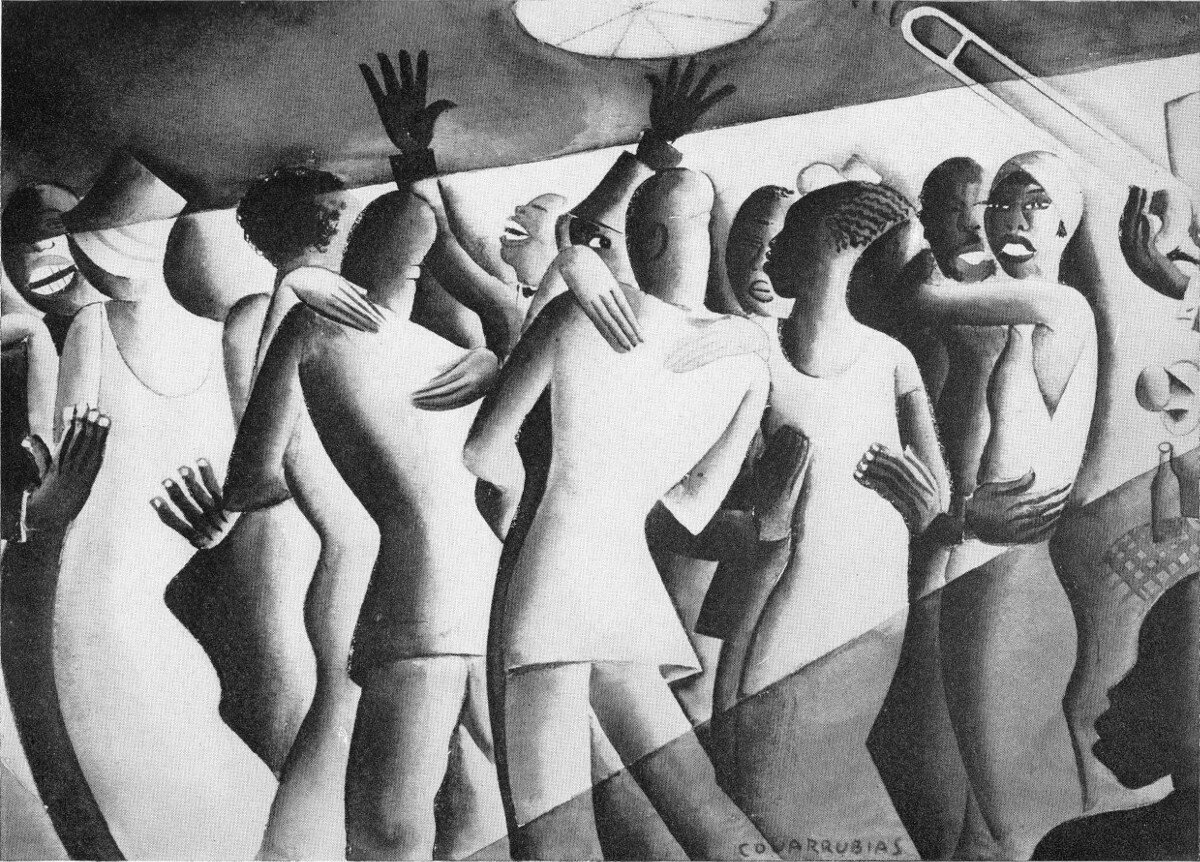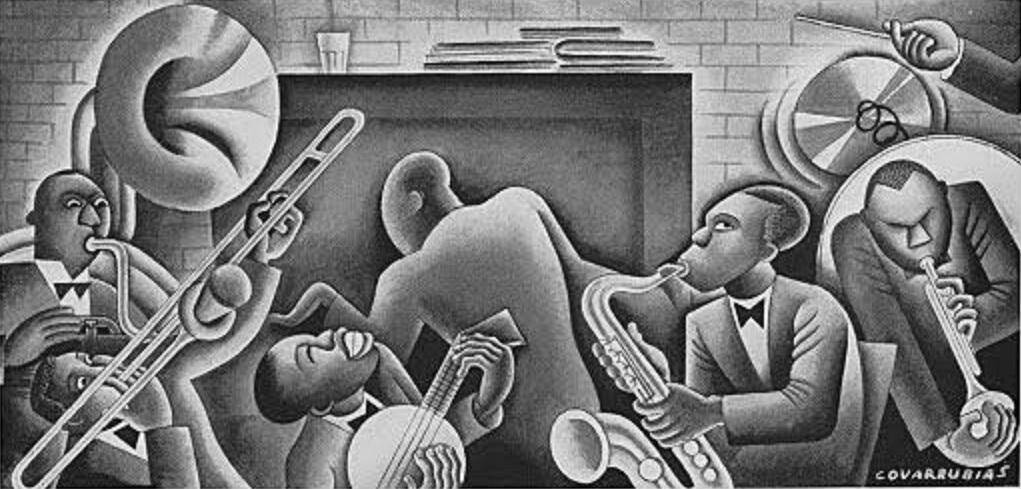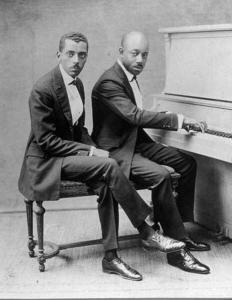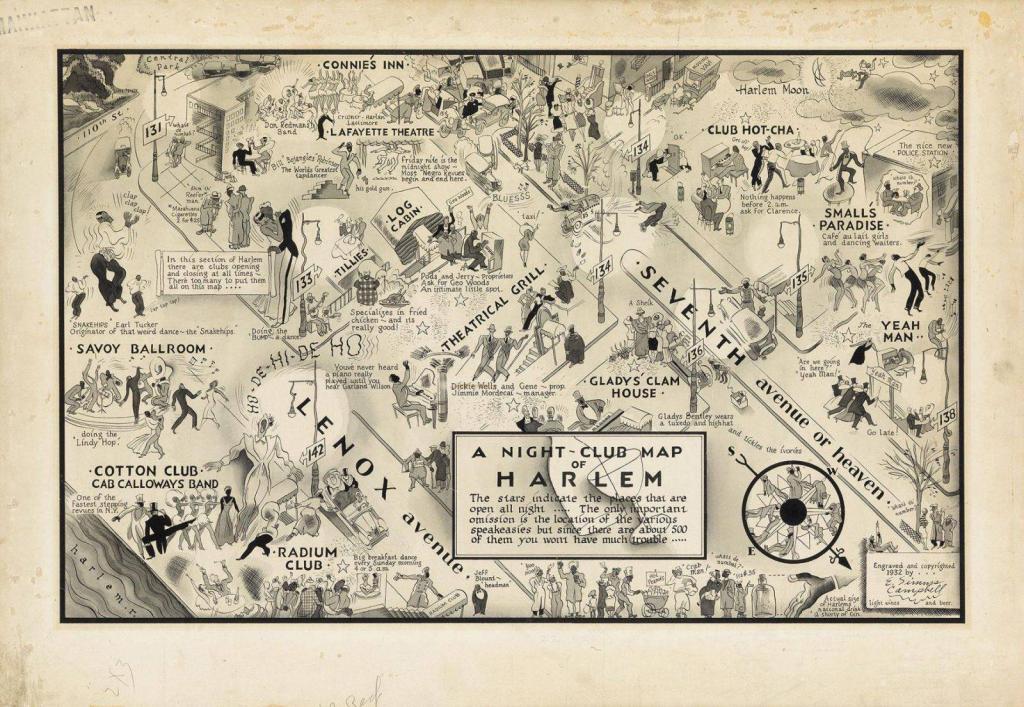The Harlem Renaissance was a cultural, social, and artistic explosion that took place in Harlem, New York and spanned the 1920s into the mid-1930s. It was considered a rebirth of African-American arts, and Harlem became a cultural center, drawing writers, artists, musicians, photographers, poets, and scholars to a place where they could freely express their talents.
Starting in 1890, African-Americans in the South, disenfranchised and threatened by Jim Crow laws, migrated to the North and Midwest in great numbers in search of a better life. The continuing hardships they faced in the Deep South were severe. In the North, industrial jobs were numerous in a booming economy, and factory owners welcomed a new source of cheap labor. This came to be known as the Great Migration.
The compact environment of the new American city to brought into close proximity some of the great minds of the day. Harlem brought notice to creative work that might have otherwise been lost or never produced. The artists of the Harlem Renaissance transformed African-American culture but also had a profound impact on all of American culture.

Harlem was originally settled by the Dutch in 1658 and was largely farmland and undeveloped territory for approximately 200 years. As New York’s population grew, residential and commercial expansion moved northward, the year 1898 saw the advent of the first housing development for multi-ethnic groups. African-Americans began to arrive in large numbers in 1905 and by 1920 represented 35% of Harlem’s population, becoming 70% by 1930.
Impact of Music
Music was a prominent part of African-American culture during the Harlem Renaissance. The term “Jazz Age” was used by many who saw African-American music, especially the blues and jazz, as the defining features of the Renaissance. However, both jazz and the blues were imports to Harlem. They emerged out of the African-American experience around the turn of the century in southern towns and cities, like New Orleans, Memphis, and St. Louis.
The general consensus is that jazz originated among the musicians who played in the bars and brothels of the infamous Storyville district of New Orleans. Jelly Roll Morton claimed to have invented jazz there in 1902, but it is doubtful that any one person holds that honor. From these origins, these musical forms spread across the country, north to Chicago before arriving in New York a few years before World War I.
Jazz Reaches NYC
According to James Weldon Johnson, jazz reached New York in 1905 at Proctor’s 23rd Street Theater. Johnson described the band there as “a playing-singing-dancing orchestra, making dominant use of banjos, mandolins, guitars, saxophones, and drums in combination. There was also a violin, a couple of brass instruments, and a double-bass. The group was called the Memphis Students—an apt name that overlooked the fact that the performers were not students and were not from Memphis.”
Seven years later, composer and bandleader James Reese Europe, one of the Memphis Students, took his Clef Club Orchestra to Carnegie Hall. During World War I, while serving as an officer for a machine-gun company in the famed 369th U.S. Infantry Division, James Europe, fellow officer Noble Sissle, and the regimental band introduced the sounds of ragtime, jazz, and the blues to European audiences.

Blues and black blues performers such as musician W. C. Handy and vocalist Ma Rainey were popular on the Vaudeville circuit in the late 19th century. The publication of W. C. Handy’s “Memphis Blues” in 1912 and the first recordings a few years later brought this genre into the mainstream of American popular culture.
Following World War I, black music, especially the blues and jazz, became increasingly popular with both black and white audiences. Europe continued his career as a successful bandleader until his untimely death in 1919. Ma Rainey and other jazz artists and blues singers began to sign recording contracts, initially with African-American record companies like Black Swan Records, but very quickly with Paramount, Columbia, and other mainstream recording outlets. In Harlem, one club opened after another, each featuring jazz orchestras or blues singers. Noble Sissle, of course, was one of the team behind the production of Shuffle Along, which opened Broadway up to Chocolate Dandies and a series of other black musical comedies, featuring these new musical styles.
Shuffle Along a Hit

For those who viewed the Harlem Renaissance in terms of musical theater and entertainment, the birth occurred when Shuffle Along opened at the 63rd Street Musical Hall. Shuffle Along was a musical play written by a pair of veteran Vaudeville acts—comedians Flournoy Miller and Aubrey Lyles, and composers/singers Eubie Blake and Noble Sissle. Most of its cast featured unknowns, but some, like Josephine Baker and Paul Robeson, who had only minor roles in the production, were on their way to international fame.
Shuffle Along brought jazz to Broadway. It combined jazz music with very creatively choreographed jazz dance to transform musical theater into something new, exciting and daring. The show was a critical and financial success and ran 474 performances on Broadway and spawned three touring companies. It was a hit show written, performed and produced by blacks, and it generated a demand for more. Within three years, nine other African-American shows appeared on Broadway, and white writers and composers rushed to produce their versions of black musical comedies.
Harlem Stride Piano
A new way of playing the piano called the Harlem Stride style was created during the Harlem Renaissance. Its popularity soon spread throughout the country and was consequently at an all-time high. Innovation and liveliness were important characteristics of the style, and musicians at the time such as Jelly Roll Morton, Willie “The Lion” Smith, and James P. Johnson are considered to have laid the foundation for future musicians of this genre. Duke Ellington, Chick Webb, Ella Fitzgerald, Billie Holiday, Cab Calloway, and tap dancer Bill “Bojangles” Robinson were among the many performers who gained popularity during the Harlem Renaissance.
No aspect of the Harlem Renaissance shaped America and the entire world as much as jazz. Poet Langston Hughes saw Shuffle Along as a seminal event in the emergence of the Harlem Renaissance. It introduced him to the creative world of New York, and it helped to redefine and energize music and nightlife in Harlem. In the process, it introduced white New Yorkers to black music, theater, and entertainment and helped generated the white fascination with Harlem and the African American arts that was so much a part of the Harlem Renaissance.
Also Read: The Harlem Renaissance: Guide to Historic Jazz Clubs
Explore profiles and recordings from hundreds of jazz musicians and bands in the Red Hot Jazz Archive.
Lew Shaw started writing about music as the publicist for the famous Berkshire Music Barn in the 1960s. He joined the West Coast Rag in 1989 and has been a guiding light to this paper through the two name changes since then as we grew to become The Syncopated Times. 47 of his profiles of today's top musicians are collected in Jazz Beat: Notes on Classic Jazz.Volume two, Jazz Beat Encore: More Notes on Classic Jazz contains 43 more! Lew taps his extensive network of connections and friends throughout the traditional jazz world to bring us his Jazz Jottings column every month.






















